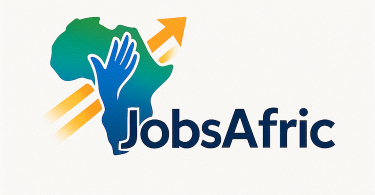In our digital world, your online presence works like your professional business card. It’s the virtual first impression that can either help or hurt your job search efforts. Personal branding isn’t something only social media influencers need to worry about; it’s a valuable tool for anyone looking for work to display their skills, values, and personality to potential employers. Having a strong online presence can help you stand out in a crowded job market, making you both memorable and trustworthy. This guide shows you how to create an impressive personal brand using platforms like LinkedIn, online portfolios, and social media to make sure you leave a positive lasting impression.
Understanding Why Personal Branding Is Important
What you have online is often the first thing employers will see when they learn about you. A 2023 survey revealed that 70% of recruiters look at candidates’ social media profiles before making hiring decisions. A well crafted personal brand shows professionalism, expertise, and that you share similar values with the company. It’s not about creating a perfect image of yourself, but rather about genuinely showing who you are and what valuable skills you can offer.
Making Your LinkedIn Profile Stand Out
LinkedIn serves as the foundation of professional branding online. Here’s how to make yours impressive:
Professional Photo and Header Image: Use a clear, high quality photo where you’re smiling, with a simple background. Add a custom header image that fits your industry (like a clean design for technology or a creative image for marketing).
Eye Catching Headline: Go beyond just listing your job title. Try something like “UX Designer Creating User Focused Solutions | Passionate about Making Technology Accessible” to showcase both your skills and what drives you.
Personal Summary That Connects: Write a 3 to 5 sentence summary using “I” statements that combines your abilities, accomplishments, and career goals. For example: “I’m a data scientist who loves turning complex data into useful insights. I helped increase revenue by 30% through predictive modeling at [Company]. I enjoy tackling challenging problems and I’m excited to join a team that’s innovating in [Industry].”
Highlight Your Skills: List relevant abilities (like Python programming or project management) and ask coworkers to endorse these skills. Add any certifications you have to build your credibility.
Stay active by regularly posting about industry news, sharing your work projects, or commenting on other people’s posts to remain visible in your network.
Creating an Online Portfolio
If you work in creative or technical fields, having a portfolio can be a game changer. It gives people a real look at your work, whether that’s design concepts or coding projects. Here’s how to build one:
Pick the Right Platform: Use Behance or Dribble for design work, GitHub for programming projects, or Wix and Squarespace for personal websites. Make sure whatever platform you choose looks professional and is easy to navigate.
Select Your Best Work: Choose 3 to 5 projects that really show off your abilities. For each one, write a short description explaining what you did and what impact it had (like “Redesigned an online store, which increased customer retention by 25%”). Include pictures or code samples when appropriate.
Keep Everything Current: Regularly update your portfolio with new projects to show you’re growing professionally. Put the link in your resume, LinkedIn profile, and email signature.
Portfolios aren’t just for creative people. Marketers can showcase successful campaigns, and data analysts can share visualizations or detailed case studies.
Taking Care of Your Digital Reputation
Employers often search for candidates online, so it’s important to check what comes up when someone looks for you. Search your own name using incognito mode to see what appears. Clean up or make private any unprofessional social media posts (like party pictures or controversial opinions). On platforms like X (formerly Twitter), participate thoughtfully by sharing industry insights or adding meaningful comments when you retweet content. Stay away from heated arguments that could make you look bad.
Keep your brand consistent across all platforms. Use the same professional photo, username (like @JaneDoeMarketing), and similar bio information wherever possible. This consistency makes you more recognizable and trustworthy.
Establishing Yourself as a Knowledgeable Professional
Position yourself as someone who knows their field well by sharing valuable content. Write LinkedIn articles about industry trends, such as “How Artificial Intelligence Is Changing Marketing Strategies.” On X, use hashtags like #CareerAdvice or #TechTrends to join ongoing conversations. If you work in technology, contribute to open source projects on GitHub or write blog posts on Medium. These activities show you’re an expert in your field and can attract the attention of recruiters.
Using Your Brand to Network
Your online presence isn’t just something static; it’s a tool for building professional relationships. Connect with people in your industry by commenting on their posts or sending personalized messages: “Hi [Name], I really enjoyed your article about [Topic]. I’m exploring opportunities in [Field] and would really appreciate your insights.” Share other people’s content and give them credit to build positive relationships. Join online communities like Slack groups or Reddit discussions related to your industry to participate in conversations and make connections.
Avoiding Common Mistakes
Don’t Share Too Much Personal Information: Keep personal posts (like family photos) separate from professional ones. Use privacy settings to control what people can see.
Don’t Pretend to Be Someone You’re Not: Exaggerating your skills or copying someone else’s style can backfire. Let your real personality come through in a professional way.
Don’t Let Your Profiles Go Stale: Having outdated information suggests you’re not actively engaged in your field. Update your content every few months.
Tracking How Well Your Brand Is Working
Keep an eye on whether your personal brand is effective. Are you getting more LinkedIn profile views or connection requests? Are recruiters contacting you? Tools like LinkedIn Analytics can show you who’s looking at your profile. Adjust your content based on what gets the best response; focus on the posts or projects that get people engaged.
Your Professional Story Online
Your online presence is a living representation of your career journey. By optimizing LinkedIn, building a strong portfolio, and managing what appears about you online, you create a personal brand that represents you well even before you walk into an interview. Stay true to yourself, be consistent across platforms, and actively engage with your professional community. Your next great career opportunity might be just one click away.





Leave a Comment